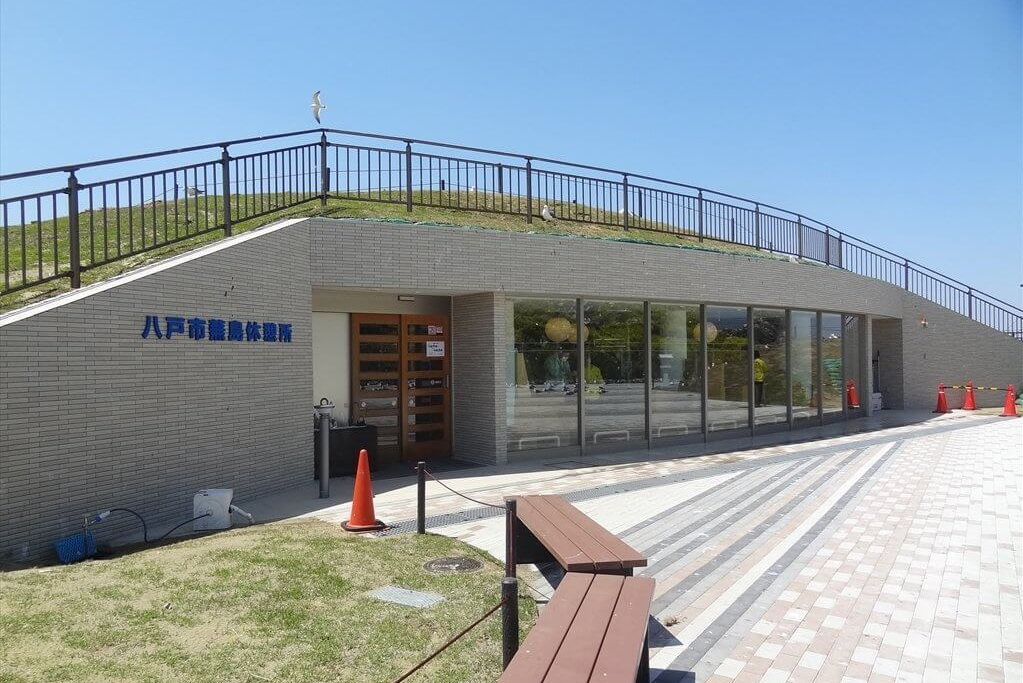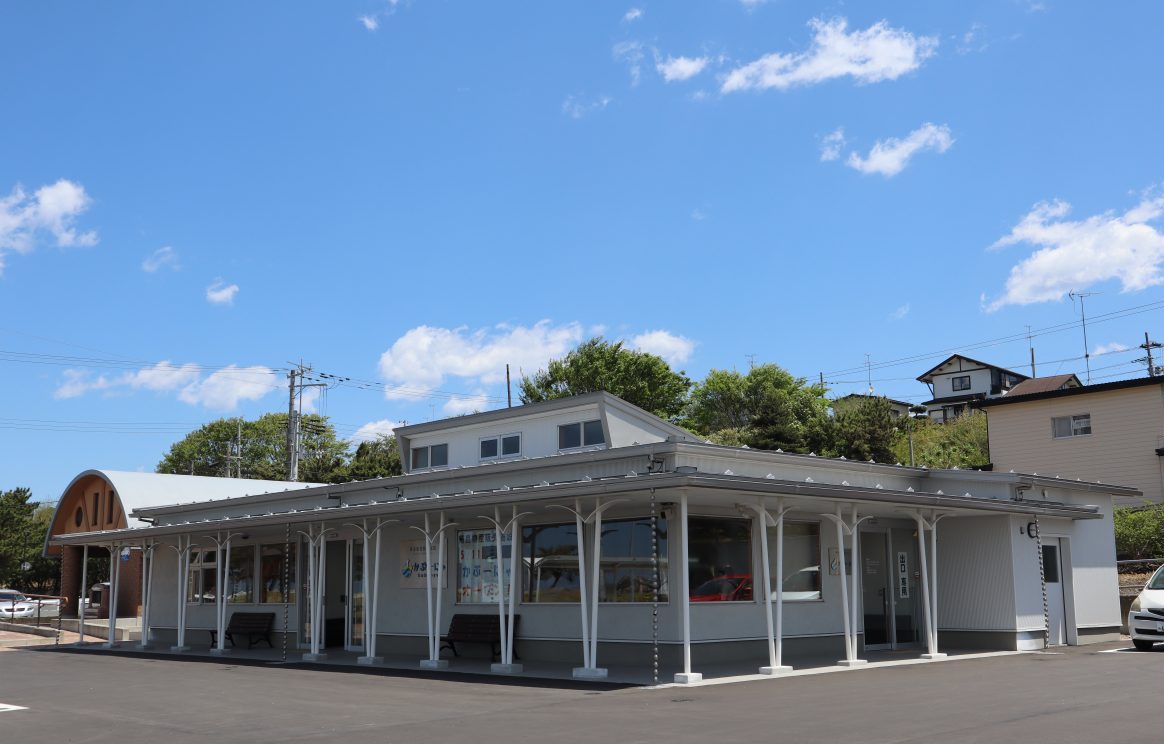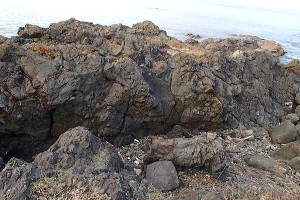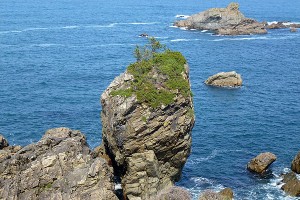A walking tour to feel “Sanriku Fukko (reconstruction) National Park” with all five senses
“Kabushima Shrine” is located on Kabushima Island, the start and end point of the “Michinoku Coastal Trail”.
Benzaiten, the guardian deity of business prosperity and safety of fisheries is enshrined here and has long been worshipped by the local people.
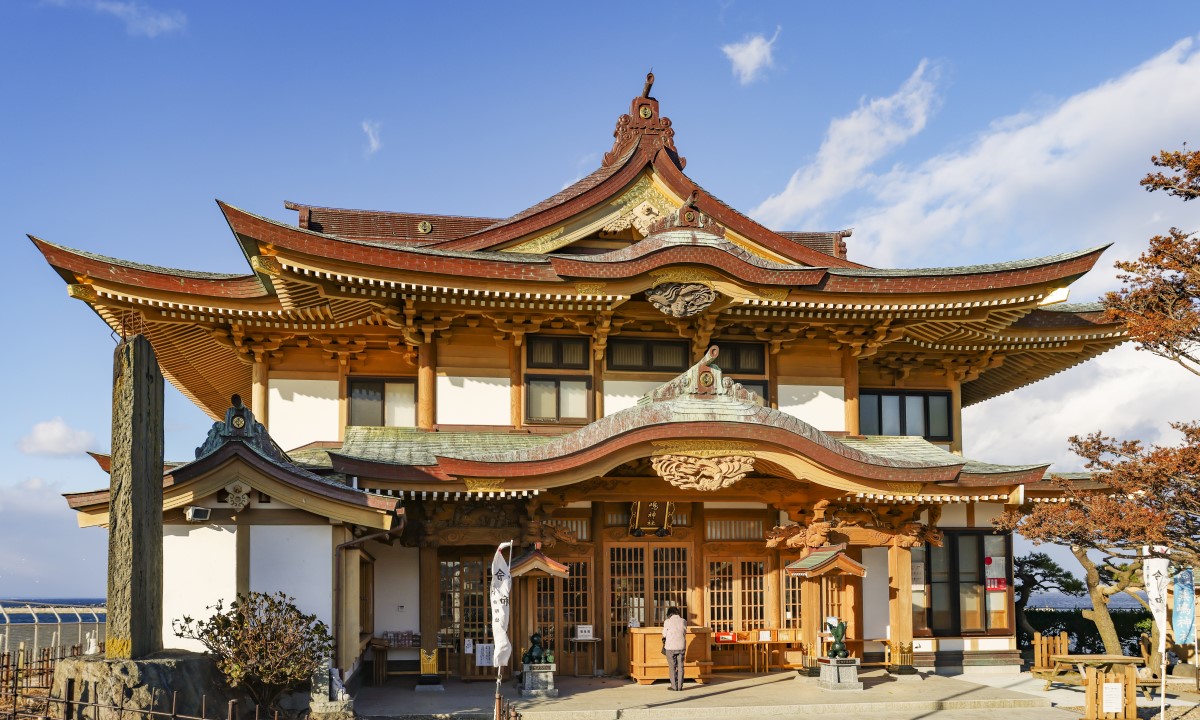
Founded in the Kamakura period. Inubomaru, the son of the warlord Kudo Suketsune that served Minamoto-no-Yoritomo, was exiled to the present-day town of Same, Hachinohe City. It is said that Enoshima Island in the capital of Kamakura and Kabushima Island were so similar, that they became nostalgic and enshrined Ichikishima-hime-no-mikoto (Benzaiten) in honor of it.
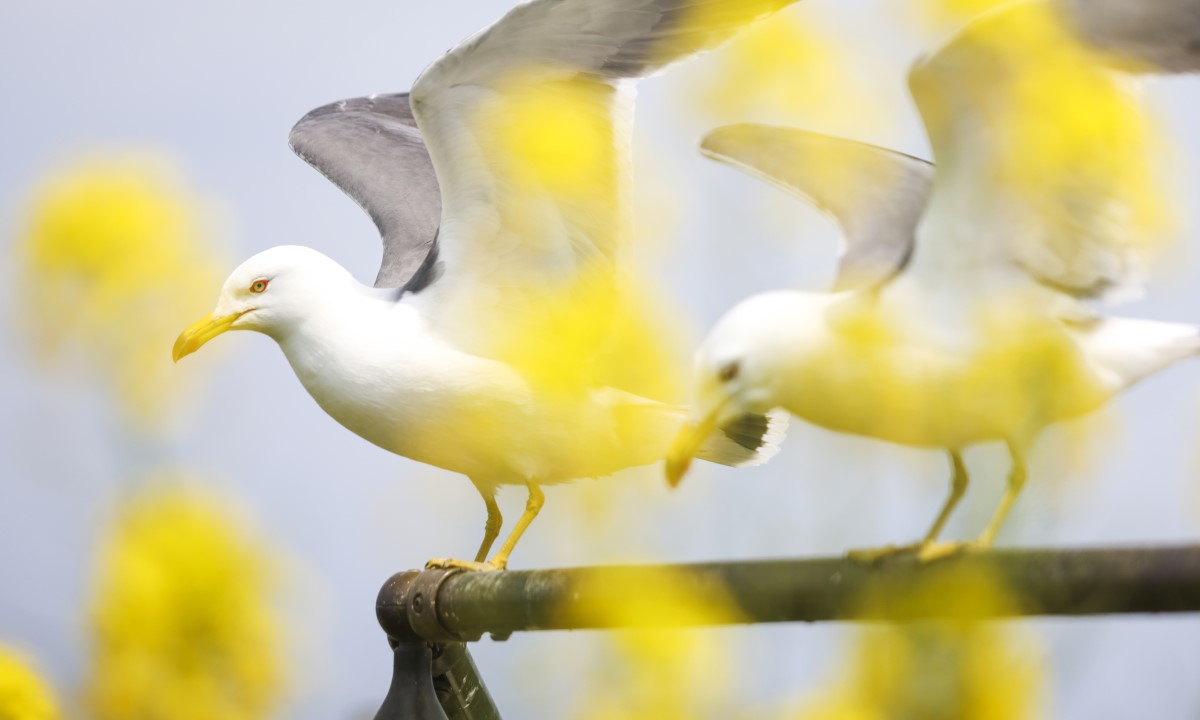
Kabushima Island is known as the breeding ground of the black-tailed gulls, and from March to August each year, some 30,000 to 40,000 black-tailed gulls can be seen raising their young. The black-tailed gulls have long been cherished as a messenger of Benzaiten of Kabushima Shrine, that guides fishermen to the fishing grounds. If you are hit by a bird dropping, please make your way to the office of Kabushima Shrine, where they will present you with a “Certificate of Good Luck”.
A fire destroyed the shrine building in 2015, but donations were collected from all over the country and were rebuilt approximately five years later. It has since opened to the public, in time for the festival that was held on March 26, 2020.
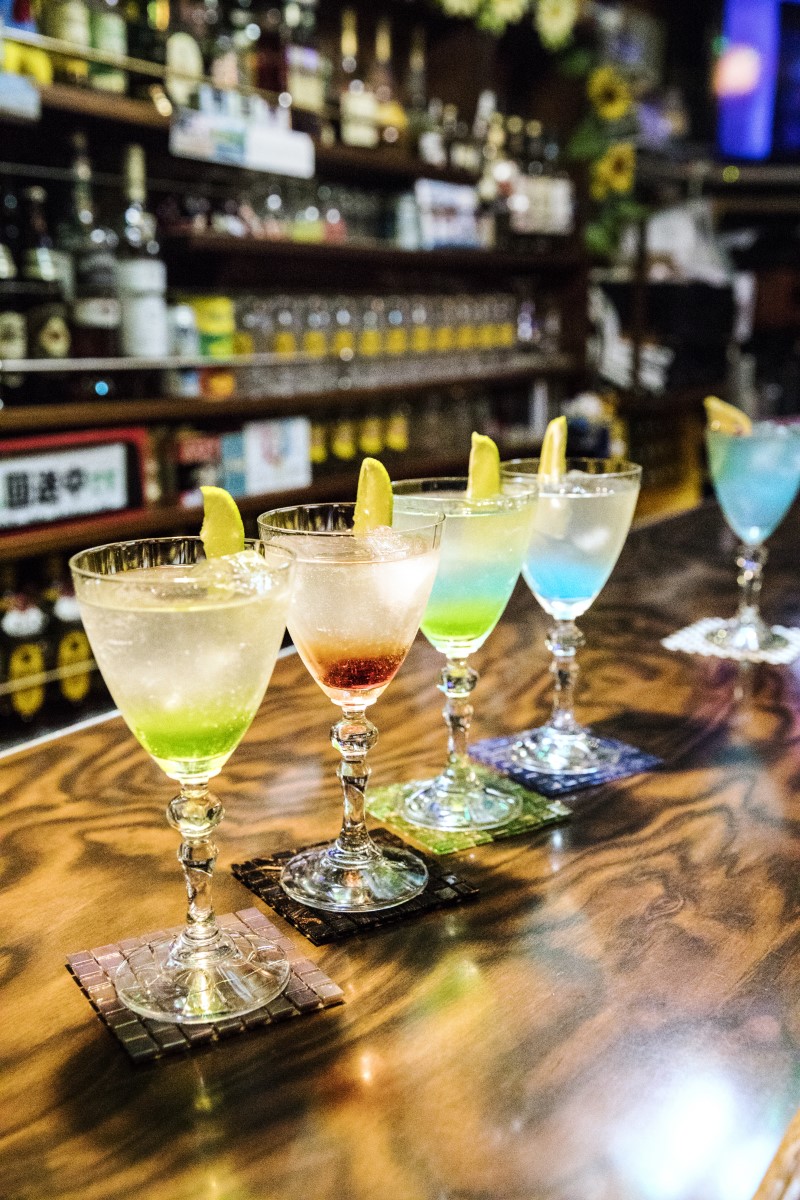
Hachinohe’s Western-style cafe Prince has an original cocktail called the “Kabushima”, for which a portion of the proceeds were donated to the rebuilding of the shrine. You can still drink it today and also enjoy other cocktails related to the “Sanriku Fukko (reconstruction) National Park”, from the “Michinoku Coastal Trail”, the “Tanesashi Coast” and the “Shirahama”.
The reconstruction included the use of many Aomori timbers from the moisture-resistant Aomori cypress for the shrine floor and decorative rafters, Japanese Nanbu red pine for the beams in the attic, and Aomori chestnut trees for the Tamagaki fences and the Temizuya purification basin. The Haiden worship hall is built with an Irimoya-style gabled, hipped roof, and the Karahafu gable is inspired by the image of a “family of black-tailed gulls flapping their wings”.
The atrium ceiling sculpture, “Hiten-no-Kanade” was created with the image of five celestial maidens playing Gagaku (Japanese court music). “Sho” (a traditional Japanese wind instrument resembling panpipes), “Ryu-teki” (dragon flute), “Taiko” drums, and “Biwa” (a Japanese lute), with the celestial maiden in the center holding a turnip flower and a black-tailed gull taking off from the shrine building after fulfilling a deity’s wish.
Since the word “Kabu” in Kabushima can mean both “turnip” and “stock” in Japanese, the “Kabuagari Hyotan amulet” are popular, for it is said to bring prosperity to your stock prices in the market and for your popularity “stock”.
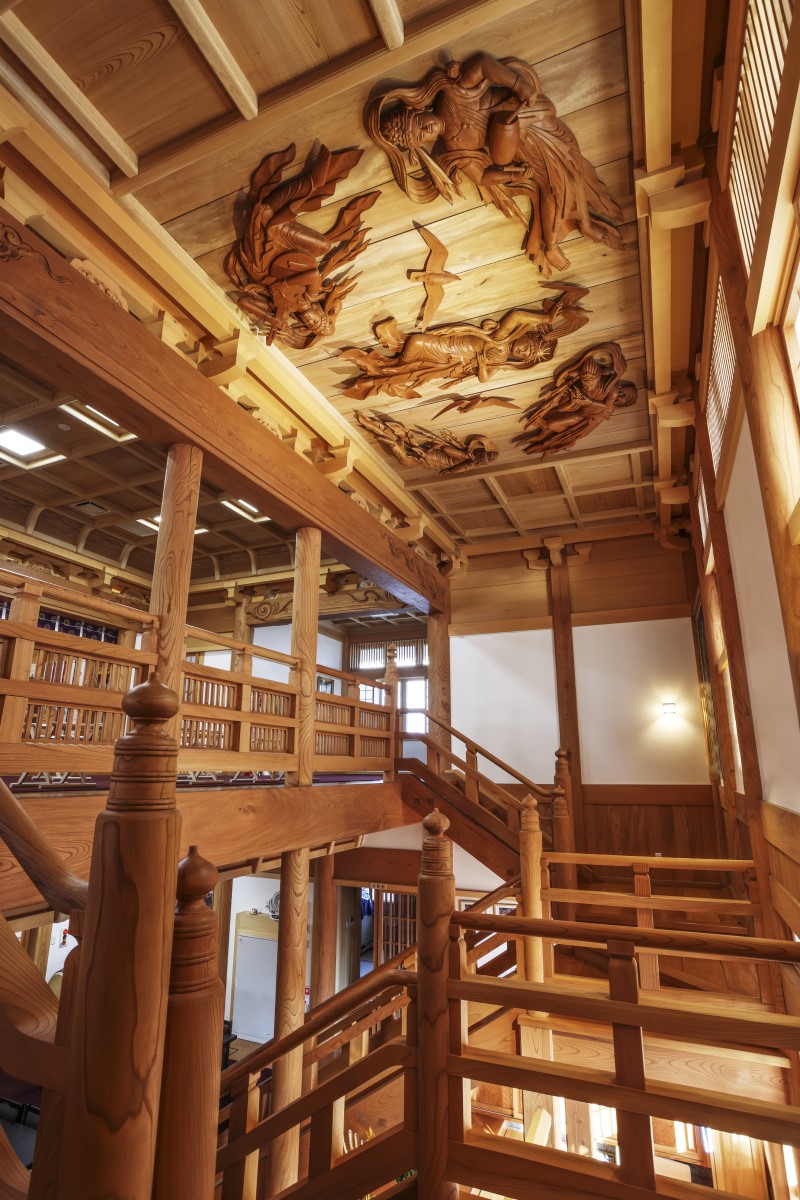
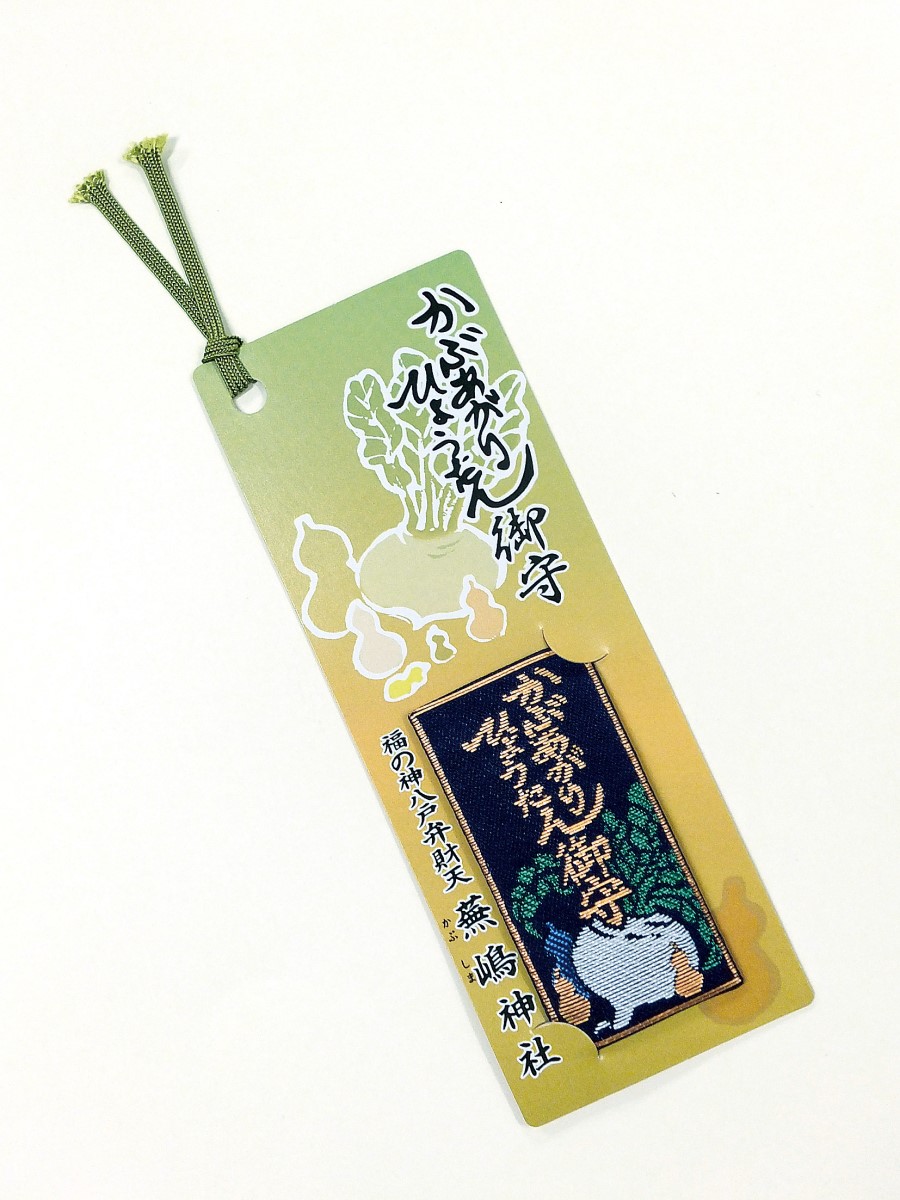
Visitors are encouraged to visit exhibits on the history of Kabushima Island, black-tailed gulls and Michinoku Coastal Trail located around the shrine, as well as the Kabushima Island rest area where visitors can observe nesting black-tailed gulls and Kabushima Marketplace, “Kabunya” for souvenirs and light refreshments made from local ingredients.
